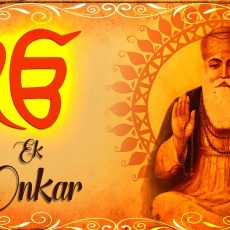The schools of Indian Philosophy can be broadly divided broadly into two classes, namely, orthodox (astika) and heterodox (nastika).
Under the first group fall the six philosophical systems of Mimamsa, Vedanta, Sankhya, Yoga, Nyaya and Vaisheshika. These schools belong to this category not because they believe in God but because they believe in the authority of the Vedas. Grammarian school, the medical school are some others that are also referred to as the orthodox schools.
Now coming to the heterodox category, we have the materialists or Carvakas, Jainas and Buddhists. Unlike the orthodox schools, the members of these philosophical systems do not believe in the authority of the Vedas.
The Vedas are the earliest record of Indian literature and subsequent philosophical thoughts seem to be influenced highly by them, either positively or negatively. Amongst the positively influenced ones, the Mimamsa and the Vedanta may be regarded as the direct continuation of the Vedic culture. Of the two sides of the Vedas, Mimamsa talked about the ritualistic part and the Vedanta emphasized the speculative part. Though the Sankhya, Yoga, Nyaya and Vaisheshika based their theories on ordinary human experience and reasoning, they did not challenge the authority of the Vedas but tried to show that the testimony of the Vedas was quite in harmony with their rationally established theories.
Now let’s look at how these schools came about.
As soon as philosophical system came up, it invited a band of followers to lead life as per its ways after all Indian Philosophy had to be lived, day in and day out. And these followers passed down their beliefs through generations. The different schools of thought continued to exist through unbroken change of successive adherents for centuries.
Each school of thought regarded as its duty to satisfy all possible objections that might be put forth by other schools against its views. This developed a spirit of precise and clear development of ideas in order to sustain them in the face of objections.
There was a general process which dictated the development of these schools. In the orthodox schools, next to the Vedas and Upanishads, we find the sutra literature bringing in the idea of systematic philosophical thinking. Sutra etymologically means thread and in this context it means a mnemonic statement.
As teachings were passed down orally there was a felt need to reduce the main thoughts into brief statements that could be easily remembered by the students. These statements could be problems, answers, objections and replies to them. A work of sutra contains many such short statements arranged into different chapters based on the topics they deal with.
Considering these statements were short, their meaning wasn’t always clear. Thus, arose commentaries which offered elaborate explanations. As time went on, commentaries on commentaries arose. The philosophical literature of the orthodox schools developed in this way.
The history of the development of the heterodox schools is also the same except they do not start from any sutra work of the above kind.
And that is how the encyclopaedic and rich Indian Philosophy which we know of today was formed.




